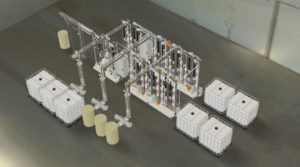“Our belief is led by our actions, and we have supported and funded IMC’s efforts for the development of RapidSX and the coordinated plan for its subsequent deployment into the first modern rare-earth separation plant in North America, the Alaska SMC – on schedule for production of individual rare-earth oxides in H1-2024,” Ucore chairman and CEO, Pat Ryan, said in a media statement.
Ryan pointed out that following initial extraction-rate testing in the summer of 2021, the team at Kingston Process Metallurgy subsequently completed a series of additional extraction-rate tests to further validate the approach being taken and to quantify the effects of the underlying phenomenon being exploited using the RapidSX columns.

The executive said that such tests utilized various mixed REE solutions, including commercially-available feedstocks procured from a US-allied source.
“With the associated empirical work now concluded, an independent report describing the findings is scheduled for January 2022,” he said.
Ucore’s chairman also mentioned that IMC has made significant progress in recent months on the mathematical modelling of the chemical processes that occur during the operation of the RapidSX technology.
“These models will form the basis of the proprietary software that will be utilized at the commercial scale for the control of RapidSX-based separation facilities to optimize parameters for the physical hardware platform,” he said. “The mathematical models have already been effectively used in the development of REE separation flowsheets and regimes for extraction-rate testing and will assist in the finalization of the flowsheet for the initial campaign, which will be undertaken using the demo plant.”
In addition to the modelling work, Pat Ryan said that IMC has been working with researchers at the University of Toronto to develop and evaluate proprietary, cost-effective methods for reducing the amount of yttrium in heavy-REE-rich feedstocks, prior to separation using RapidSX.
He explained that yttrium is a lower-value REE, and reducing the quantity of Y in HREE feedstocks prior to subsequent separation, has the potential to reduce operating costs, as well the required plant size, thus cutting capital costs.




